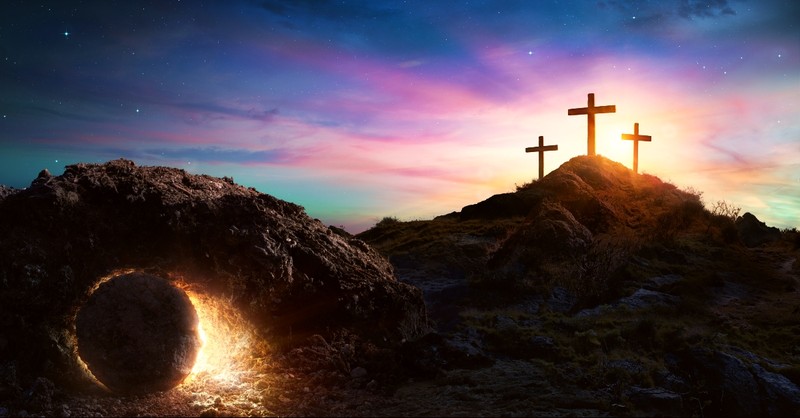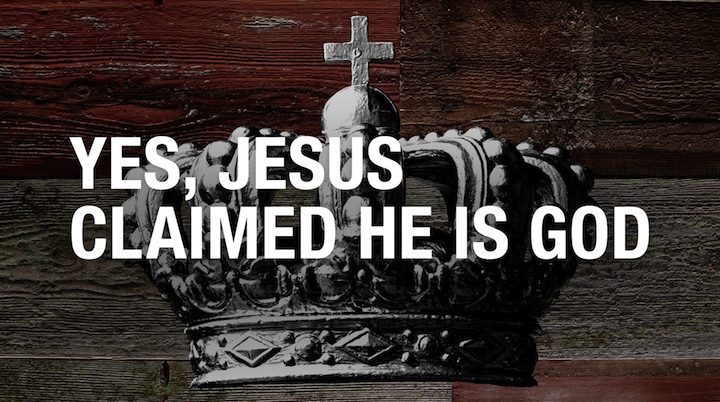The Resurrection Of Jesus Christ
The Resurrection Of Jesus Christ

A good deal is made of the apparent contradictions in the various accounts of the resurrection of Jesus Christ from the dead. A prominent unbeliever sent to the daily papers the following problem for me to solve. He said, “The account of the visit to the grave is entirely different in the four Gospels. Two of the Gospels state that the women saw two angels at the grave, and two of the other Gospels state that they only saw one angel.”
What is the solution of this apparent difficulty?
First of all, the objector does not truly state the facts in the case. Far from its being true that two of the Gospels state that they “saw only one angel,” not one of the Gospels states that they saw only one angel. It is true that Matthew says that “they saw an angel” (28:1–5), and Mark says: “They saw a young man,” presumably an angel (16:5–7); but neither Matthew nor Mark says that they saw “only” one angel. Saying that they saw one does not preclude the possibility of their seeing two.
Furthermore, it is not true that two of the Gospels state that the women saw two angels at the grave. It is true that Luke says (24:3–4) that after they had entered into the sepulcher two men (presumably angels) stood by them in dazzling apparel. But this apparently does not refer to the incident that Matthew refers to at all, for the angel there mentioned was an angel who was outside the sepulcher.
Nor does it seem to refer to the same fact of which Mark speaks, for the young man (or angel) in Mark’s gospel was one who was sitting on the right side of the sepulcher. This angel may have been joined later by the one who was on the outside, and these two together may have stood by the women. This seems more likely, as the message uttered by the two in Luke is in part the same as that uttered by the angel outside the sepulcher in Matthew, and by the young man inside the sepulcher in Mark (cf. Luke 24:5–6; Matthew 28:5–7; Mark 16:5–7).
The very simple solution is that there was an angel outside the tomb when the women approached, and they saw another one inside sitting. The one outside entered, and the one sitting arose, and standing by the women they uttered together or after one another the words recorded in Matthew and in Mark and in Luke.
But how about the account in John? John does tell us that there were two angels in white sitting, one at the head and one at the feet where the body of Jesus had lain (John 20:12–13). How can we reconcile that with the other three? Very easily. It was not the group of women at all that saw these two angels, but we are distinctly told it was Mary alone.
Mary started out with the other women for the sepulcher, got a little ahead of the group, was the first to see the stone rolled away from the tomb (John 20:1), immediately jumped at the conclusion that the tomb had been rifled, and ran at top speed to the city to carry the news to Peter and John (John 20:2). While she was going into the city, the other women reached and entered the tomb, and the things recorded in Matthew, Mark and Luke occurred.
These women left the sepulcher before Mary reached it the second time. Peter and John had also left it when Mary reached the sepulcher; and two angels, the one who had been on the outside and the one who at first had been sitting on the inside, were both sitting, one at the head and the other at the feet where the body of Jesus had lain.
All the other apparent contradictions in the four accounts of the resurrection—and they are quite numerous—also disappear on careful study. But these apparent contradictions are themselves proof of the truth and the accuracy of the accounts. It is evident that these four accounts are separate and independent accounts.
If four different persons had sat down to make up a story in collusion of a resurrection that never occurred, they would have made their four accounts appear to agree, at least on the surface. Whatever contradictions there might be in the four accounts would only come out after minute and careful study. But just the opposite is the case here. It is all on the surface that the apparent contradictions occur. It is only by careful and protracted study that the real agreement shines forth.
It is just such a harmony as would not exist between four accounts fabricated in collusion. It is just such an agreement as would exist in four independent accounts of substantially the same circumstances, each narrator telling the same story from his own standpoint, relating such details as impressed him, omitting other details which did not impress him but which did impress another narrator and which the other narrator related.
Sometimes two accounts would seem to contradict one another, but the third account would come in and unintentionally reconcile the apparent discrepancies between the two. This is precisely what we have in the four accounts of the resurrection of Jesus Christ. We may heartily thank God that there are these apparent discrepancies among them.
And even if we cannot find the solution of some apparent discrepancies, the fact that we do by careful study find a solution of what appeared to be an inexplicable contradiction will suggest to us the certainty that if we knew all the facts in the case, we would also find a solution of the apparent discrepancies which we cannot reconcile as yet.
The more one studies the four accounts of the resurrection, the more he will be convinced, if he is candid, that they are separate and independent accounts, and a truthful narration of what actually occurred. They could not have been fabricated in collusion with one another—the very discrepancies urged prove this. Much less could they have been fabricated independently of one another.
Four men sitting down independently of one another to fabricate an account of something that never occurred would have agreed with one another nowhere, but in point of fact the more we study these four accounts the more clearly we discover how marvelously they fit in with one another.
What has been said about the apparent discrepancies between the four accounts of the resurrection will apply also to other apparent discrepancies in the different gospel narratives of the same event. They are very numerous, and to take them all up in detail would require a volume, but the illustration given above will serve to prove how these apparent discrepancies can be reconciled one by one if we take them up thoroughly.
[1]Torrey, R. (1998, c1996). Difficulties in the Bible : Alleged errors and contradictions. Willow Grove: Woodlawn Electronic Publishing.

